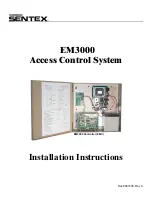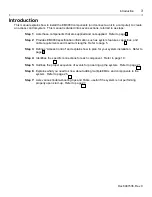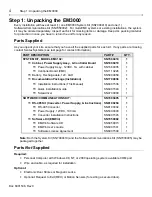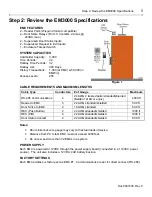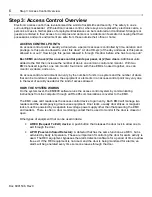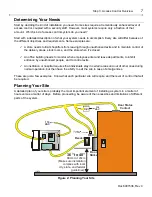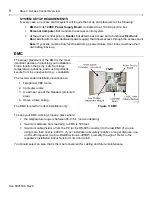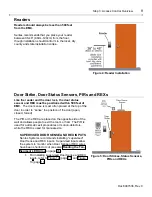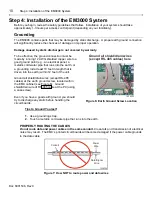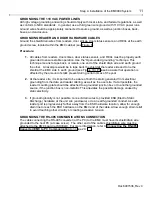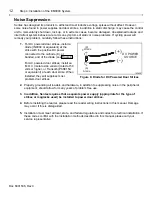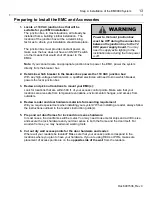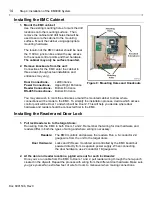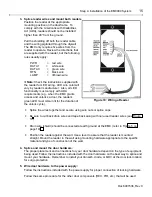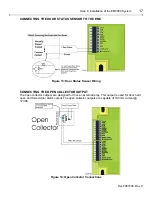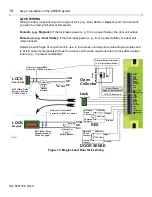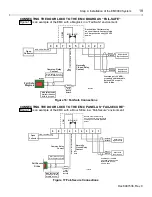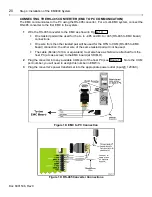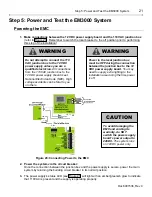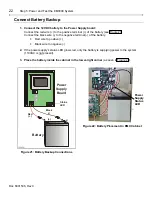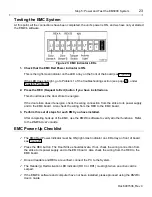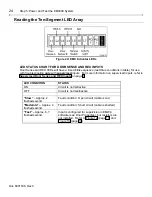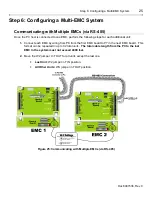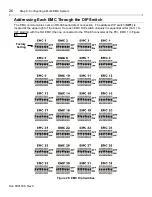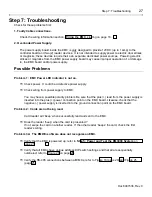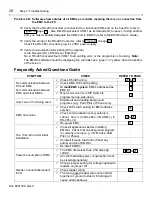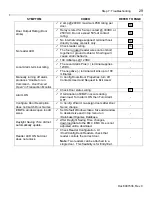
14
Step 4: Installation of the EM3000 System
Doc 6001536, Rev C
Installing the EMC Cabinet
1. Mount the EMC cabinet:
Use the existing mounting holes to mark the drill
locations onto the mounting surface. Then
remove the cabinet and drill holes that will be
used to secure the cabinet to the mounting
surface. Mount the cabinet using appropriate
mounting hardware.
The location of the EMC cabinet should be near
the 110VAC junction box and with easy access
to the access control points and their hardware.
The cabinet may only be surface mounted.
2. Remove knockouts from the unit:
Connections for the EMC enter the cabinet in
three areas (though actual installation and
entrances may vary).
Door Connections-
Left Entrance
Power Connections-
Upper-Right Entrance
Reader Connections-
Bottom Entrance
RS-485 Connections-
Bottom Entrance
Figure 9: Mounting Holes and Knockouts
You may also wish to mark the entrances around the mounted cabinet to show where
connections will be made to the EMC. To simplify the installation process, decide which access
control point will be Door 1 and which will be Door 2. This will help you decide where door
hardware and reader should be connected first to the EMC.
Installing the Reader and Door Lock
1. Pull lock/reader wire to the target doors:
Run wiring from the EMC to both Doors 1 and 2. Remember that wiring for door hardware and
readers differ in both the types of wiring and where wiring is necessary:
Readers:
The EMC monitors and powers the readers. Run a 6-conductor 22-
gauge wire from the unit to the target doors.
Door Hardware:
Locks and PIRs are monitored and controlled by the EMC board but
powered directly from a separate power supply. When connecting
the door hardware, use 2 conductor 18-gauge wire.
2. At the door and reader locations, pigtail wire out for each lock/reader:
Once you’ve run cable from the EMC to Doors 1 and 2, pull reader wiring through the hole-punch
created in the drywall. Repeat the process with wiring from the different door hardware. Make sure
you give yourself an extra few feet of wire for room to maneuver when making connections.

